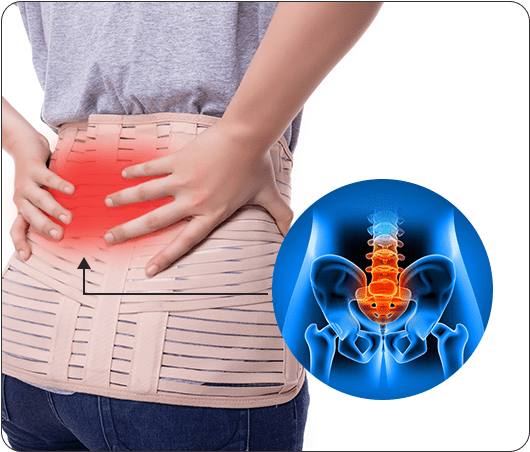- centre@esthersplacegh.com
- (+233) 050 572 1405
- Opening : Mon-Fri 09:00 - 18:00
Blog Update

Sacralization is a medical condition in which one or more vertebrae in the lower back fuse together. Most especially, the 5th lumbar vertebra (L5) and the 1st sacral vertebra (S1) are the most commonly involved in this condition.
Sacralization can be classified into complete and incomplete. A complete sacralization is when the L5 vertebra is completely fused with the sacrum, while incomplete sacralization is when there is partial fusion between the L5 and S1 vertebrae. The fusion can lead to abnormal stress on the adjacent joints, resulting in degenerative changes and arthritis. In some cases, it may also lead to spinal stenosis and nerve compression, causing pain and other symptoms.
The causes of sacralization are primarily genetic, congenital and lifestyle, which means they are present at birth and sometime our posture.
Some cause of sacralization are as follows:
Sacralization is a congenital condition, and many people who have it may not experience any symptoms. However, in some cases, sacralization may cause the following symptoms:
In diagnosing sacralization, there are several techniques and at Esther’s Place Wellbeing Hub, the Physical Therapist will perform a physical Examination by evaluating the lower back, looking for signs of stiffness, limited range of motion and nerve compression. He/she may request for Medical images such as X-ray, CT scan, MRI and EMG (Electromyography) for confirmation and design a therapeutic modality that best fit your need or goals for speedily recovery.
He/she may use cryotherapy, thermotherapy, transcutaneous electrical nerve stimulation, ultrasound therapy, electrical muscle stimulation, manual therapy, therapeutic exercises, lifestyle modification and proper posture education.
Contact Esther’s Place Wellbeing Hub on +233505721405 or locate us at Adenta Ritz Junction, Opposite GetAid Pharmacy for your Rehabilitation & Recovery, Pain Management, Active Aging, Sport Injury treatment etc…
At Esthers Place, we are committed to providing our clients with the highest quality care and support.
Esther’s Place is a wellness and rehabilitation center that is dedicated to helping individuals prevent and recover from injury, illness, or other conditions that may impact their physical, mental, and emotional wellbeing.
WhatsApp Us